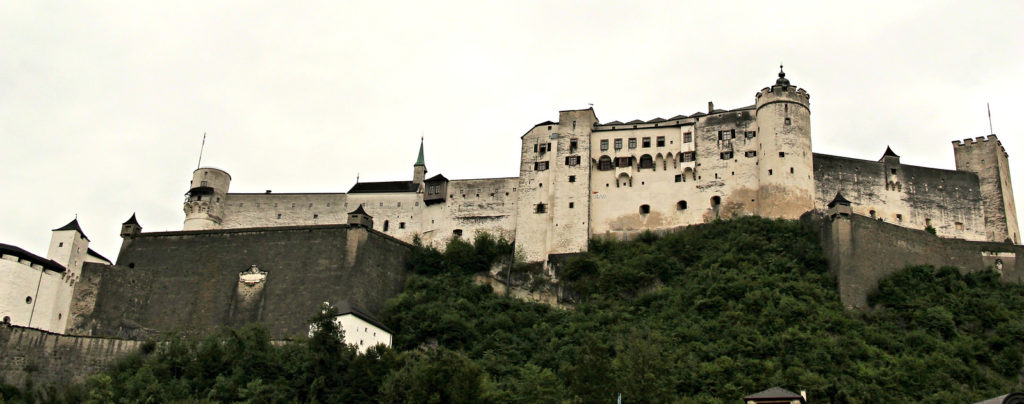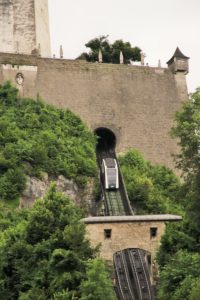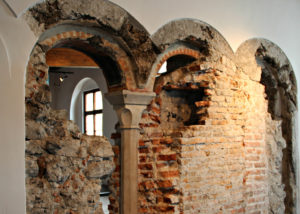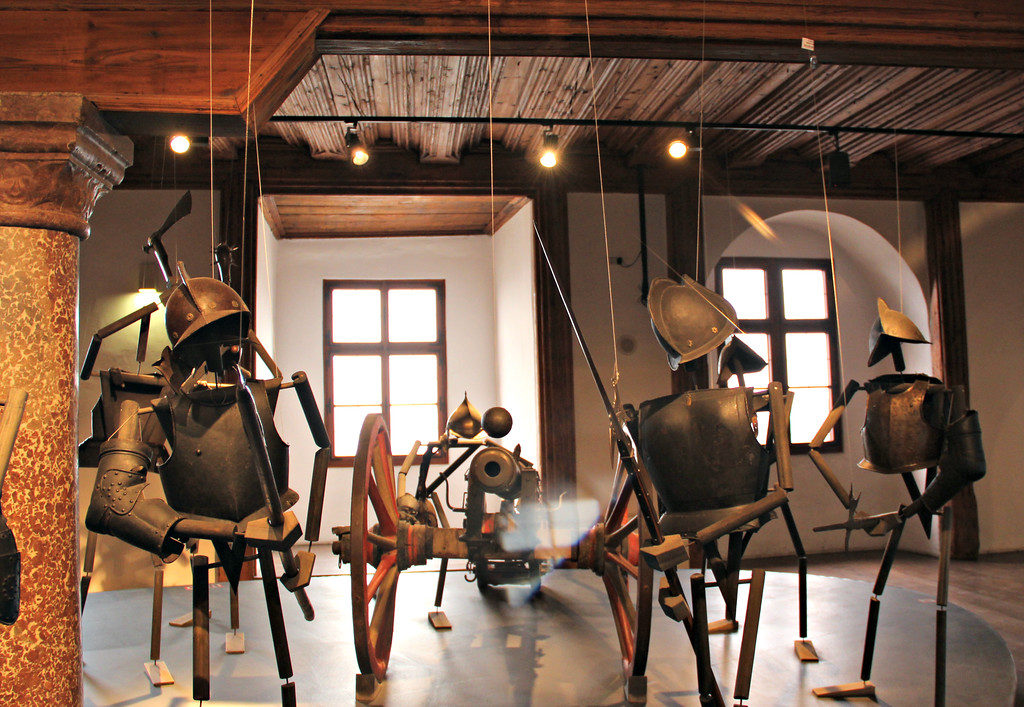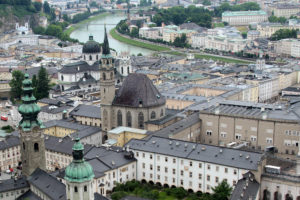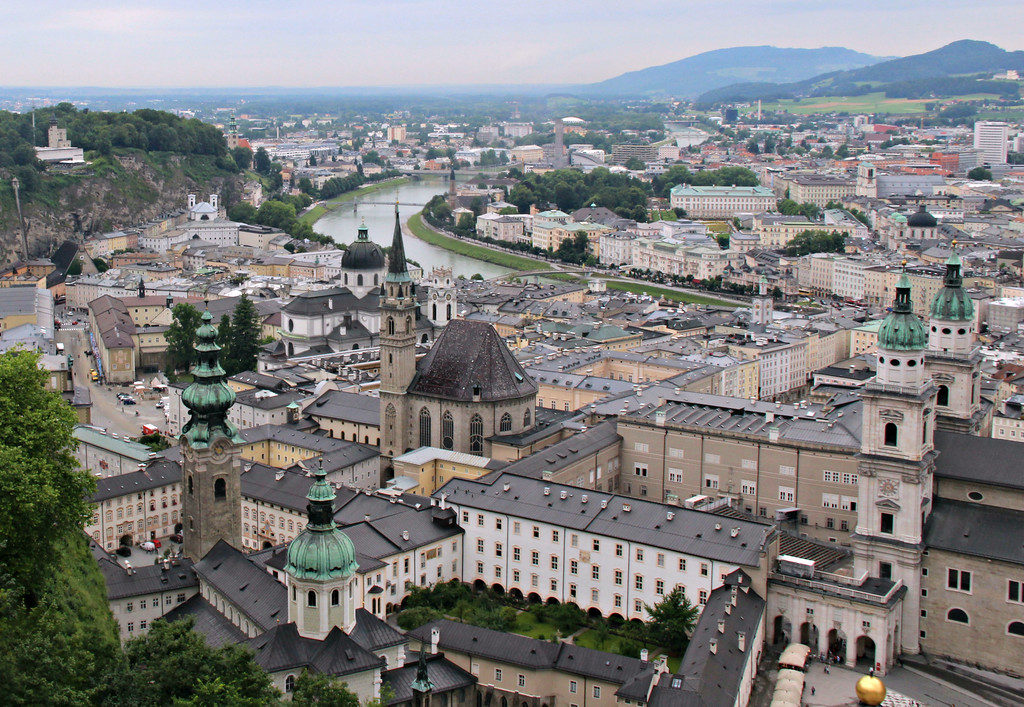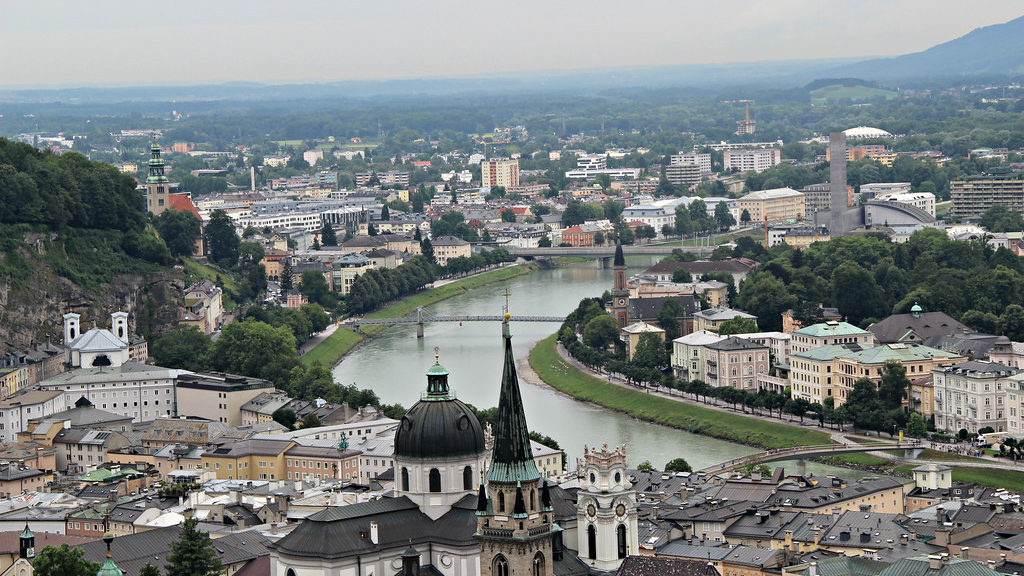
Salzburg
Salzburg is a beautiful city and we were able to spend three days there. Our hotel was on Getreidegasse, a pedestrian walkway and one of the most famous shopping streets in Salzburg. The shops were small with wrought iron signage that added to the street’s charm. Salzburg is the birthplace of Wolfgang Mozart – he was born in 1756 in the yellow house pictured below. His home was also on Getreidegasse Street. Mozart’s musical talent emerged at a young age. He composed his first piece and performed publicly at the age of five. Despite an early death at age 35, he composed 600 pieces of music.
On one our free nights, we attended a Mozart Dinner Concert. The concert was performed by Amadeus Consort, which consists of two vocalists and instrumentalists playing stringed instruments. The dinner menu was based on 18th Century recipes. The concert took place in the Baroque Hall of St. Peter Stiftskulinarium. As you can see from the picture, it is a beautiful hall. St. Peter Stiftskulinarium has quite a history as well. It is the oldest restaurant in Europe, dating back to 803. Mozart’s family actually ate at the restaurant – this was documented in his sister’s diary.
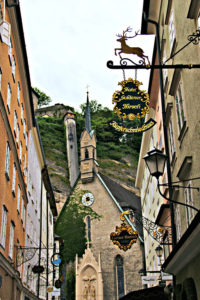
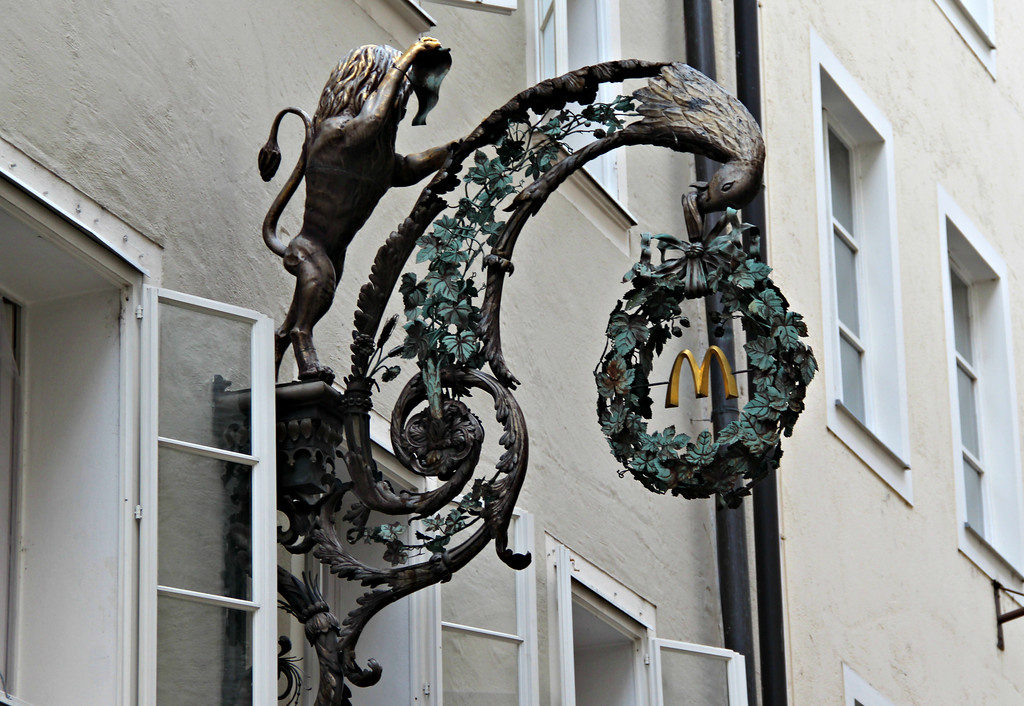
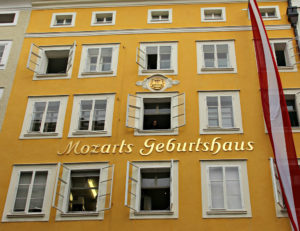

One of the largest and most beautiful squares in Salzburg is Residenplatz or Residence Square. Of particular note is the fountain (first two pictures below). Four horses are at the base of the fountain. Atlas holds the lower basin and dolphins hold the upper. Triton, a Greek god, is a at the very top. Water spouts from his horn. This fountain can be seen in scenes from The Sound of Music.
Another square, Cathedral Square, features a statue of Mary or Marion. The statue was created in the 1700’s of marble and cast lead. While my picture doesn’t perfectly show it, if you stand just in the right place, it appears that the crown on the facade of the church adorns Mary’s head. During the holiday season, the Salzburg Christkindlmarkt is held on Cathedral Square.
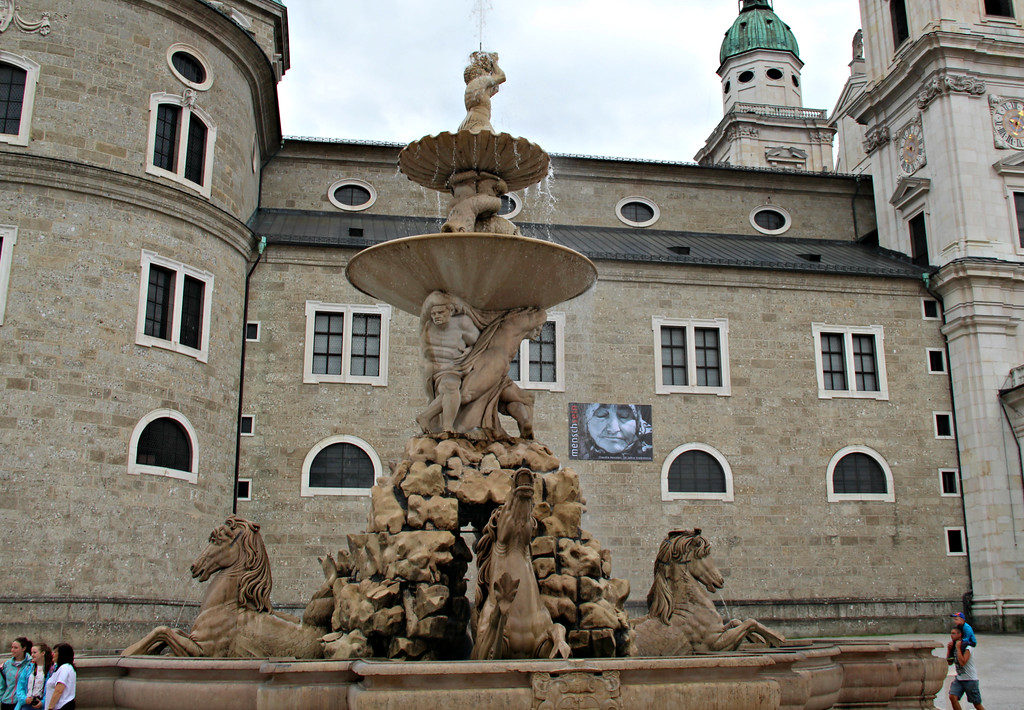
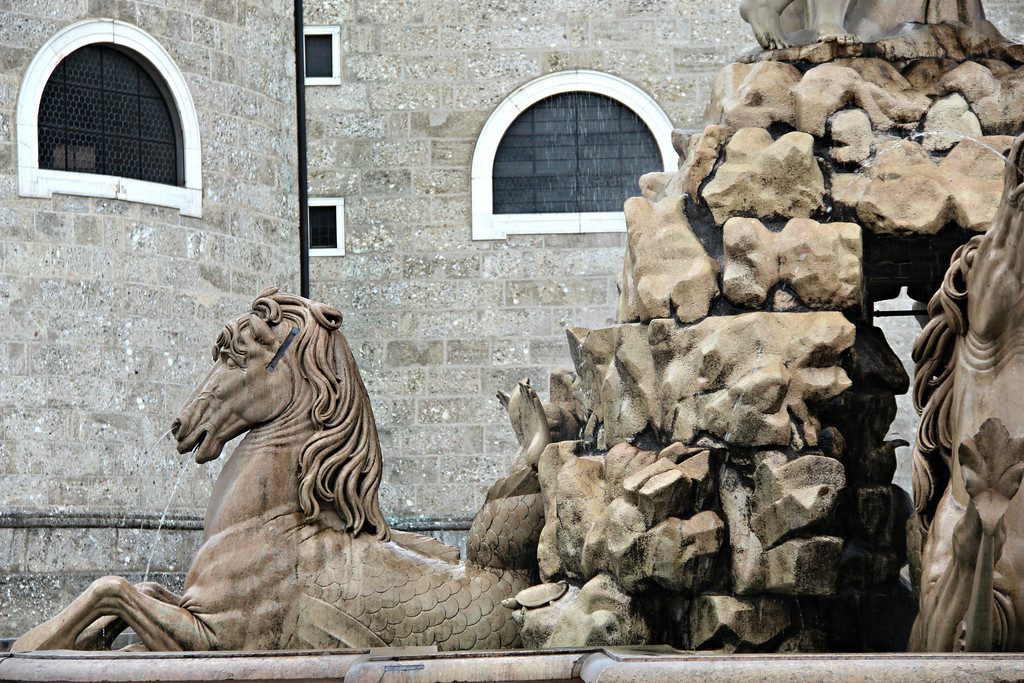
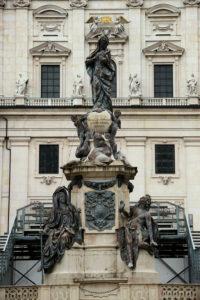
We went inside the Salzburg Cathedral. There has been a Christian church on the site since 774. The current cathedral was built in the 1600’s. During World War II, a bomb damaged the dome – restoration was completed in 1959. Immediately below is a picture of the exterior of the cathedral. The church is made of stone although the facade also has marble. The church has two towers one of which is reported to house an oven that was used to bake communion bread years ago.
The interior of the church is beautiful. I have included a picture of the altar, the domes, part of the ceiling with the beautiful frescoes, some of the pipe organ’s 4,000 pipes and the baptismal font. Mozart was baptized in this baptismal font the day after his birth. The baptismal font is made of bronze and is decorated with reliefs of saints around the sides. Mozart served as organist in the Salzburg Cathedral years later.
We also went inside St. Peter’s Abbey. Construction of the present building began in 1130. It was dedicated to St. Peter in 1147. The abbey underwent restoration in the 1700’s. The last three pictures in this section are of St. Peter’s Abbey. The pictures include the sanctuary, the organ pipes, and a close-up of a fresco on the ceiling.
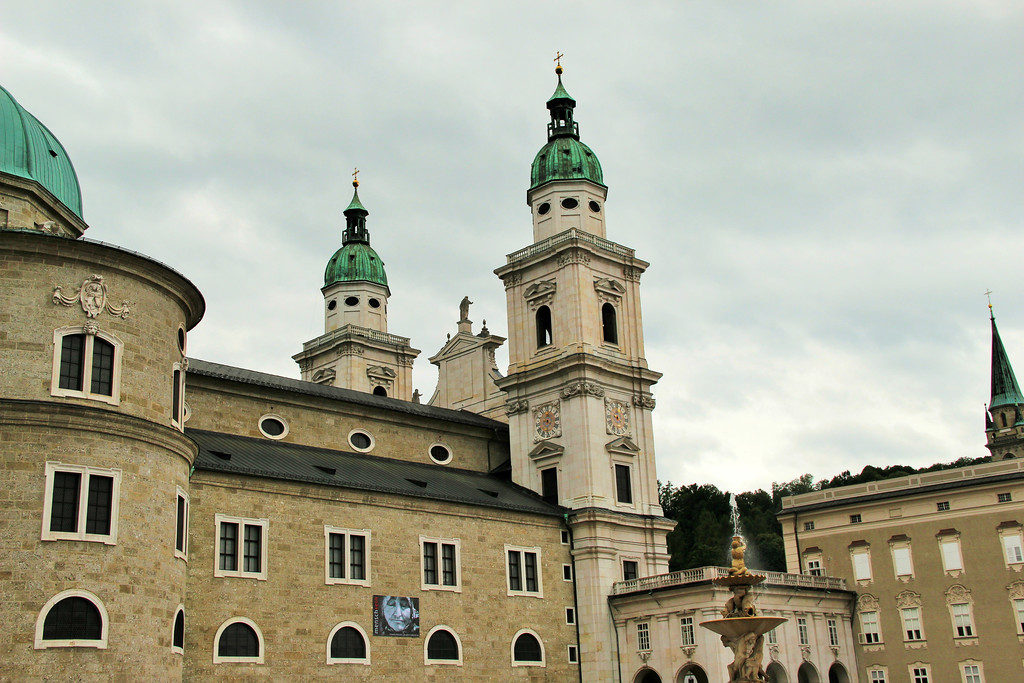
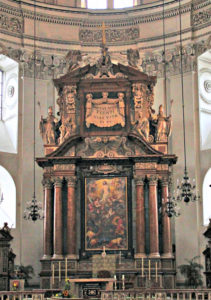
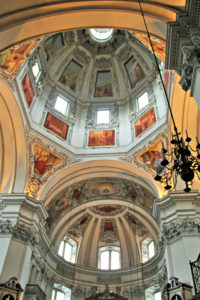


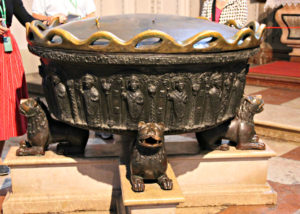
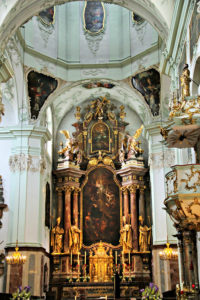

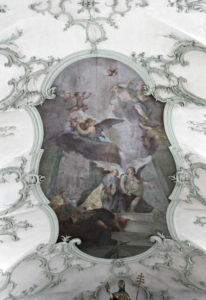
As part of our tour we also visited Berchtesgaden, the town where Adolph Hitler’s Eagle Nest was located. The picture immediately below is of the sign at the entrance tunnel; Erbaut is translated “built” documenting that the Eagle’s Nest was built in 1938. It was presented to Hitler as a 50th birthday gift. The second picture shows the entrance tunnel near the bottom of the picture and Eagle’s Nest (Kehlsteinhaus in German) depicted near the top.
The third picture is of the tunnel which leads to an elevator which took us to the Eagle’s Nest. Hitler was at the Eagle’s Nest at least 14 times. It was used for government and social meetings. He supposedly did not trust the elevator and also had a fear of heights so this probably wasn’t one of his favorite places. The fourth and fifth pictures are of a sign for the Eagle’s Nest (again, Kehlsteinhaus in German) and the exterior of the Eagle’s Nest. There is an Italian marble fireplace in the main reception room. The fireplace was a gift to Hitler from Mussolini. When the Allied soldiers captured Eagle’s Nest, several soldiers chipped small pieces away from the fireplace’s center bricks as war souvenirs. The day we visited Eagle’s Nest, it was a very cold and windy day. We did spend a little time outside and took pictures of the beautiful views.




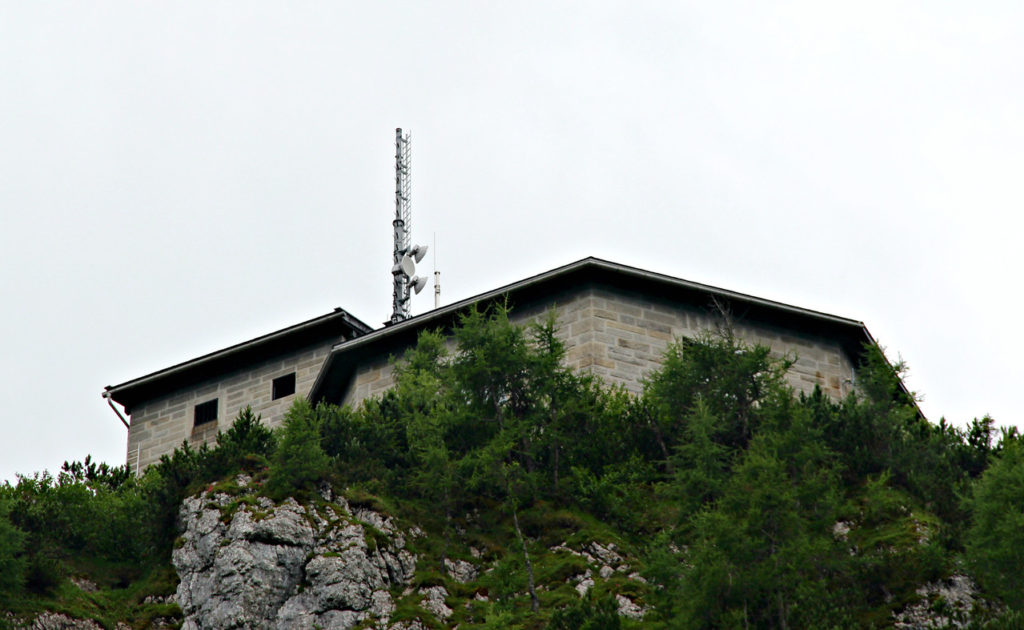
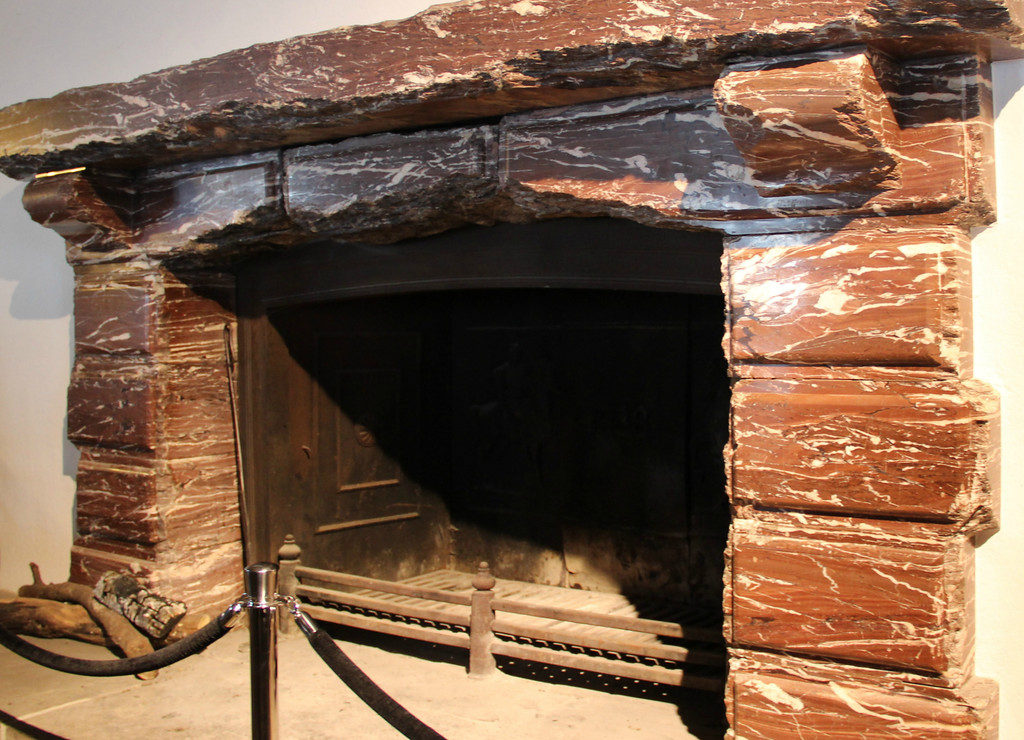

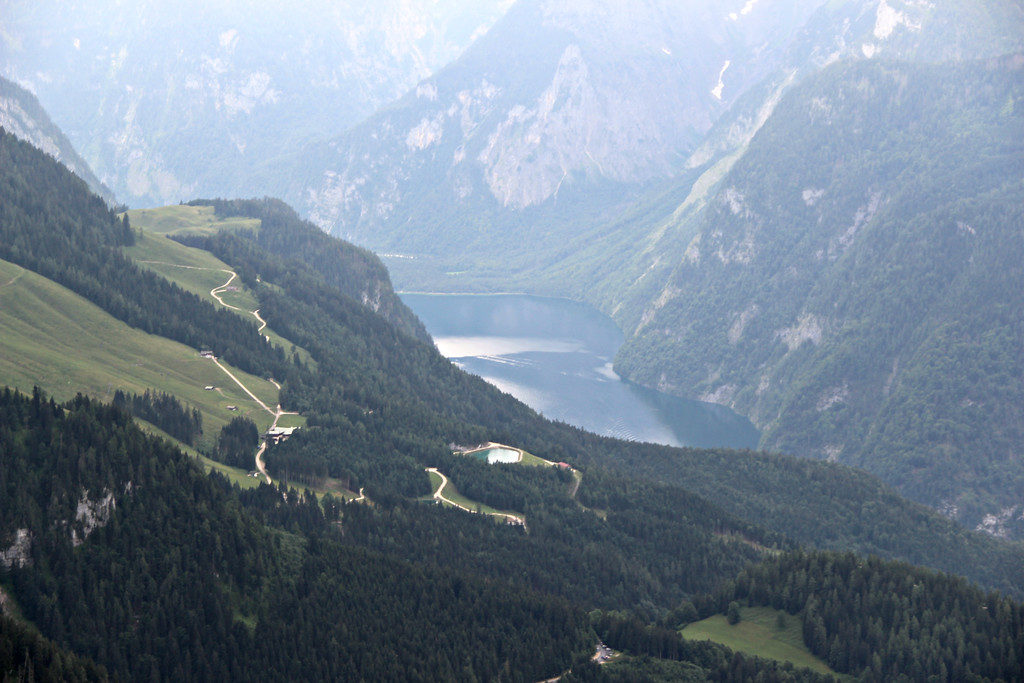
During one of our evenings in Salzburg, our group took a tour of a salt mine in nearby Berchtesgaden. We put on overalls before beginning our tour. After we had suited up, we took a mining train about 2,500 feet into the mountain. We next went on a slide that took us 110 feet down into the Kaiser Franz Sinkwerk, a salt cathedral. We toured the salt mine, learning a little about the mining process and also seeing the Stone Salt Grotto (fifth picture) which was built in honor of King Ludwig II. We took a second slide about 120 feet down to Mirror Lake which also contained salt brine. It is an underground lake that we traveled across on a barge. Back in the salt cathedral, we enjoyed dinner with entertainment.

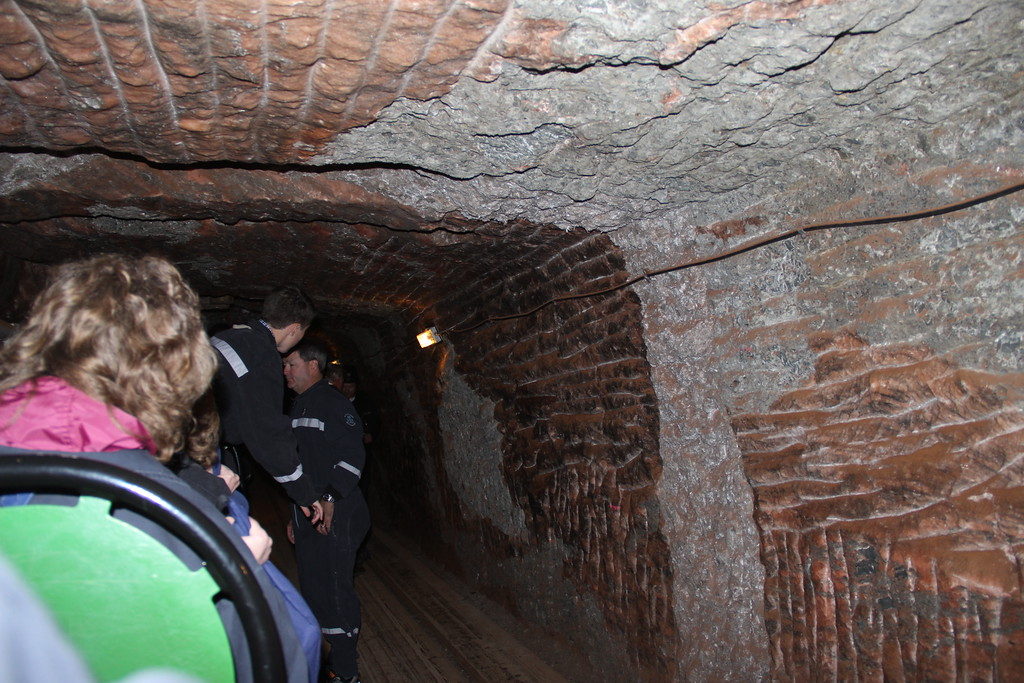
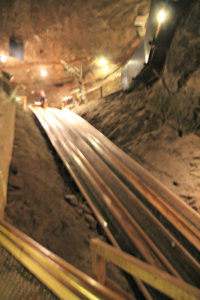
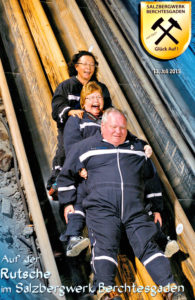
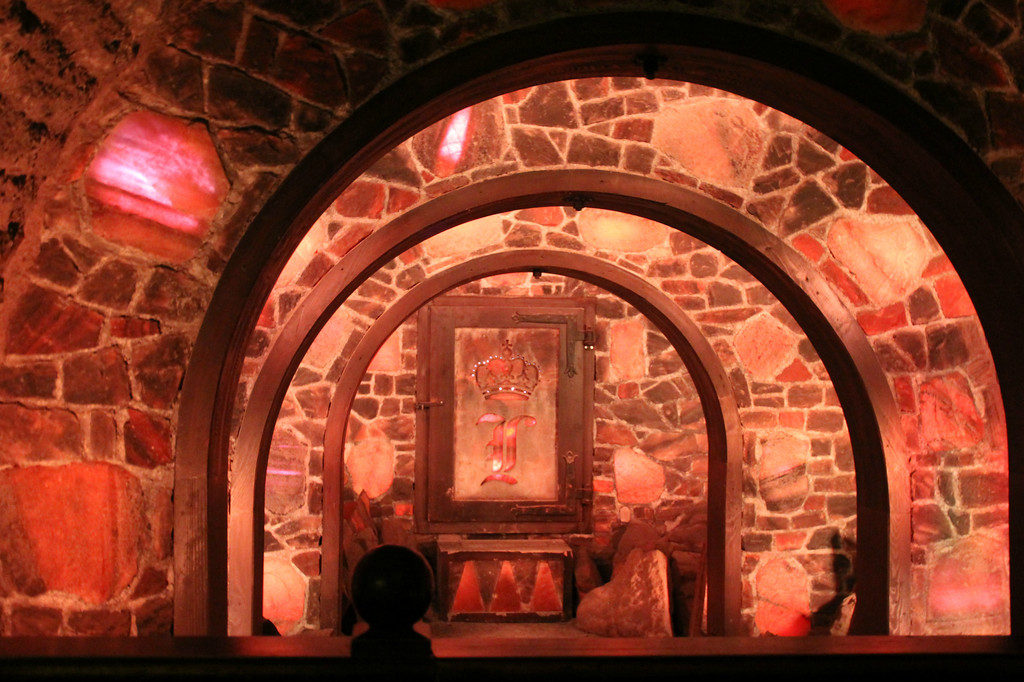
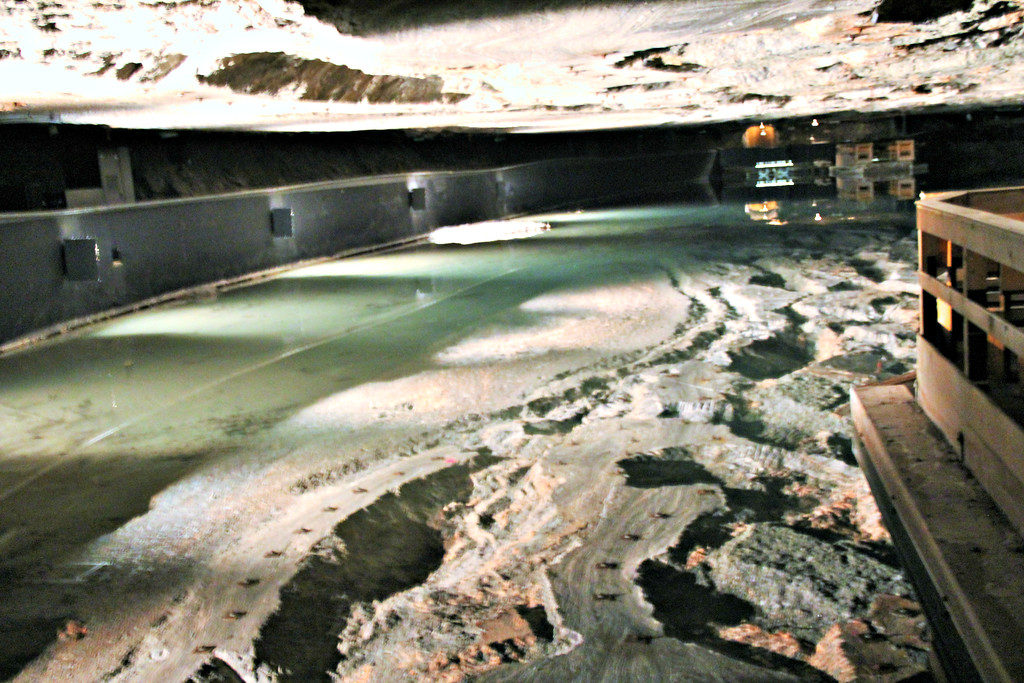
On our last day in Salzburg, we had a free morning and visited Hohensalzburg Castle (also referred to as the Hohensalzburg Fortress), one of the largest medieval castles in Europe. We took a funicular to the top of a 1,600-foot hill where the castle is located. Construction began in 1077 and over the centuries, more and more was added to it. We walked the grounds, explored some of the exhibits, and saw beautiful views of Salzburg from the hill on which the castle is situated.
The rounded archways were discovered during renovation work in 1998 (fourth and fifth pictures). They were built during the tenure of Archbishop Konrad I (1106-1147) and were the outer facade of the castle at that time. It is amazing to realize these arches stood here nearly 900 years ago. The armor depicted in the next picture is displayed in the Palace Museum. The last pictures were taken looking down from the walls of the castle. The river cutting through Salzburg is the Salzach coming from the word “salz” or “salt.” For many years salt was transported by the Salzach River; today it is transported by train.
The Hohensalzburg Castle was interesting in its own right, but even without all the exhibits, it is worth taking the funicular to the castle just for the beautiful views of Salzburg.
